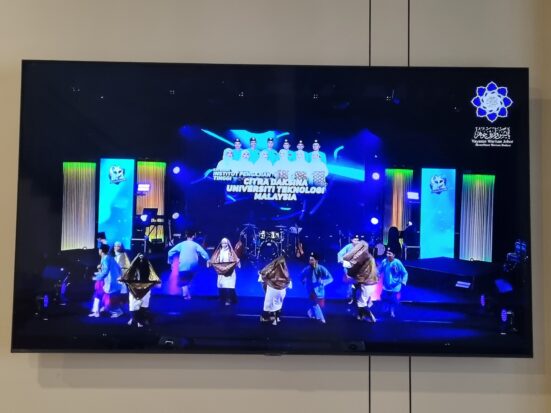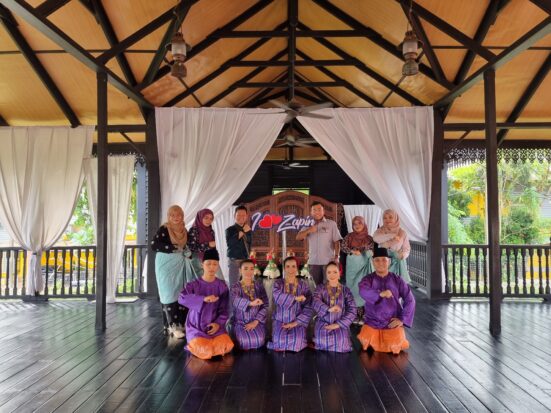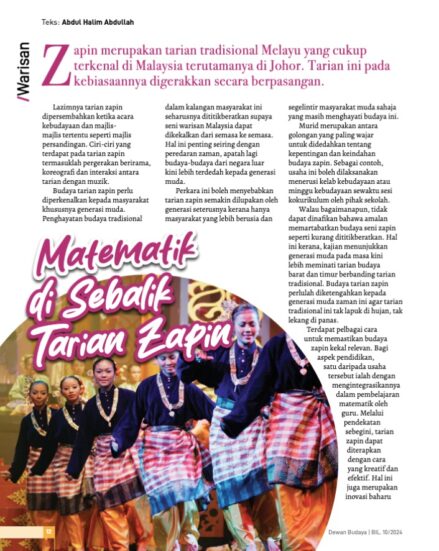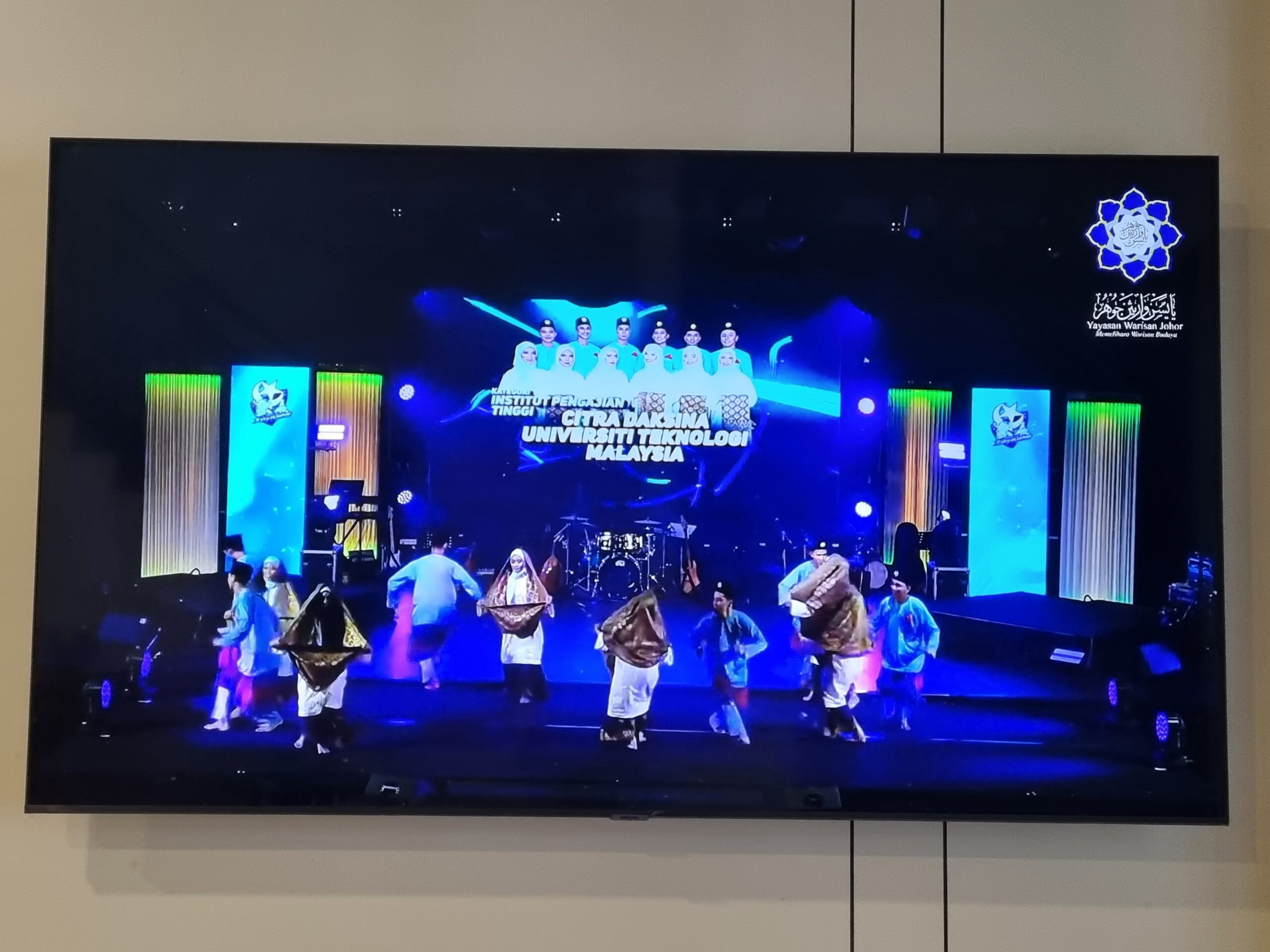One of my regular weekend routines with my children is watching their favourite YouTube channels. By now, I have memorised every word of the Didi & Friends and Cocomelon songs. However, this past weekend, after one video ended, a new recommendation appeared: a performance by Citra Daksina, the traditional dance club from Universiti Teknologi Malaysia (UTM).
I was familiar with the group, as I had often heard its name mentioned by students in the Mathematics Education program, some of whom are active members of the club. Given my background, it was not surprising that this video appeared in my feed. Previously, I led a matching grant research project that focused on integrating Johor’s cultural heritage into mathematics education, during which I watched countless Zapin dance videos. Perhaps the YouTube algorithm remembered this interest.
Curious and with my children’s permission, I clicked on the video. What a proud moment it was! Citra Daksina had won the Festival Tari Rakyat Johor in both 2023 and 2024 in the Higher Education Institution (IPT) category. What impressed me the most was the fact that UTM, a university primarily known for its focus on science and technology, has students who not only preserve but also excel in the traditional Zapin dance.

Zapin has deep cultural roots in Johor, and with the Universiti Teknologi Malaysia (UTM) being one of Malaysia’s premier universities located in Johor, the connection feels even more significant. As I watched a Zapin performance, I couldn’t help but think about this year’s International Day of Mathematics, celebrated on March 14, also known as Pi Day. The theme for this year was “Mathematics, Art, and Creativity”—how fitting!
Today, many school students struggle with mathematics, often perceiving it as abstract and intimidating—a “killer subject.” This was one of the reasons behind my research initiative: to explore how cultural elements, such as Zapin, could be used to make mathematics more relatable and enjoyable.
I still remember our visits to Yayasan Warisan Johor (YWJ). Our research team, which included Dr. Mohamad Ikram Zakaria, Associate Professor Dr. Mahani Mokhtar from the Faculty of Educational Sciences and Technology (FEST), and four final-year Bachelor of Science with Education (Mathematics) students—Nur Khairina Khairuddin, Nur Izzah Atirah Mohamad Rasol, Nurul Hazreen Hanafi, and Nurul Rabiatul Adawiyah Suhaimee—went to YWJ to deepen our understanding of Zapin. We were even invited to dance alongside the YWJ dancers!
It became evident that Zapin is rich in mathematical elements. For instance, the choreography involves isometric transformations, which include translation, reflection, and rotation. We also observed the presence of parallel lines, which in the Cartesian plane share the same gradient and never intersect. Drawing from these insights, we designed classroom activities that integrate these mathematical concepts with Zapin dance movements.

Our efforts align with the mathematics syllabus at both the primary and secondary levels, emphasising the importance of appreciating the beauty of mathematics and applying it to real-world situations. The outcomes of our project have been published in a Scopus-indexed journal, which can be accessed here: https://jpm.ejournal.unsri.ac.id/index.php/jpm/article/view/215.
To make the research more accessible, I also wrote a simplified version of our findings for Dewan Budaya, published by Dewan Bahasa dan Pustaka (DBP). I am honoured to share that this article won the Anugerah Sanjungan in the Popular Magazine Article category at the Anugerah Persatuan Sains Matematik Malaysia this year.
Integrating culture and art into mathematics directly reflects the ideals of STEAM education, which adds the “A” for Arts to the more widely known STEM (Science, Technology, Engineering, and Mathematics) framework. The arts encourage creativity and human expression, making learning more holistic and engaging.

Watching the Citra Daksina performance stirred something deeply personal in me. It was more than just pride for a student group from UTM; it reminded me that even in a university known for science and technology, our cultural roots still thrive. Citra Daksina has demonstrated that excellence in traditional arts, such as Zapin, can beautifully coexist with academic and technological pursuits. Their performance took me back to my own university days when I was involved in Gamelan performances. (Though I must admit, my wife might have the more heroic tale. She served as a Kor Sukarelawan Polis Siswa/Siswi (SUKSIS) officer during her university days, braving physical training while I practised traditional music!)
What I have come to realise, both through my research and personal reflection, is that Zapin is more than just a cultural dance; it exemplifies mathematical principles in motion. The patterns of movement, symmetry, reflection, rotation, and even parallelism are all embedded within the choreography. When we incorporate culture into the math classroom, something wonderful happens. Abstract concepts become visible, meaningful, and memorable. This kind of integration benefits both education and heritage. Students engage with mathematics in a more relatable and enjoyable way while the cultural legacy of Johor is preserved through learning. It creates a beautiful synergy, striking the perfect balance between art and logic.
Associate Professor Dr. Abdul Halim Abdullah
Faculty of Educational Sciences and Technology (FEST) UTM



